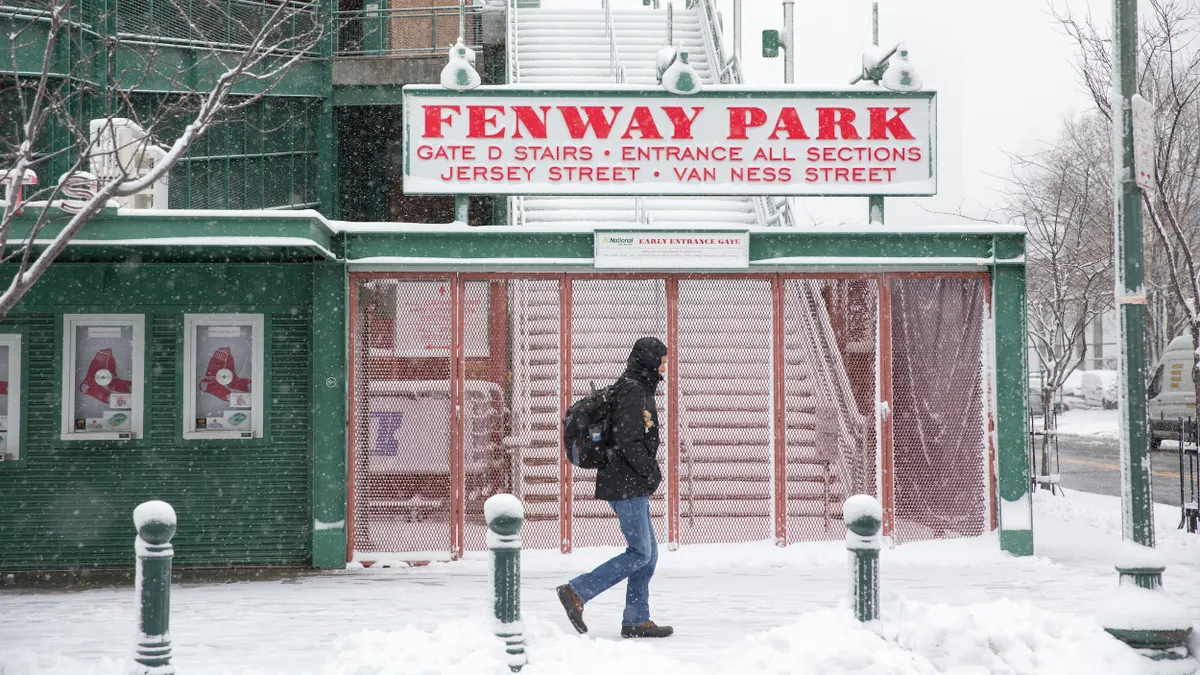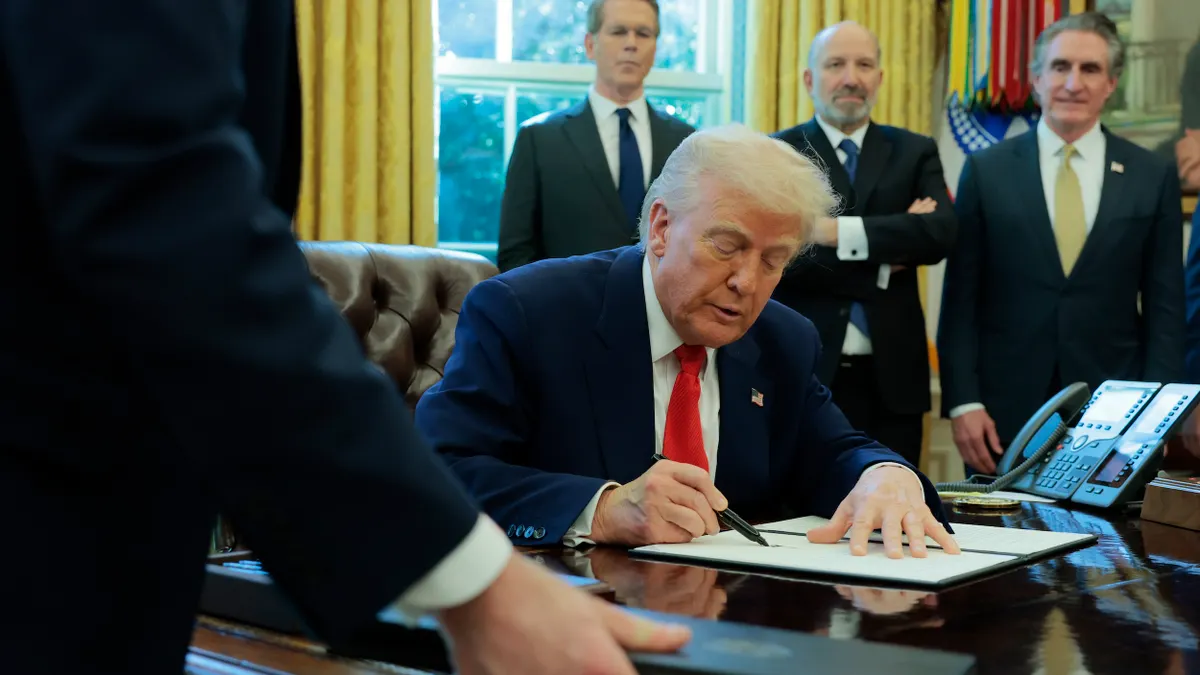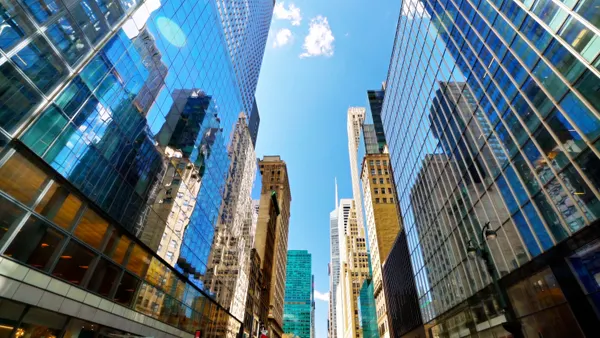Editor's note: This story is part of a series on the trends that will shape the smart cities industry in 2022.
Here’s the good news: With federal relief funds and the $1 trillion infrastructure legislation that passed last year, cities will have new resources to tackle challenges such as making public transportation more equitable and accommodating growing numbers of electric vehicles hitting the streets. If the Build Back Better bill becomes law, additional financial resources could help cities reduce greenhouse emissions and continue to grow the momentum around decarbonizing their building stocks.
The bad news is that many serious issues cities have been facing in the past two years remain or have gotten worse. City leaders are grappling with the rising cost of housing, which has left many financially insecure. They are adapting to worsening and more frequent extreme weather events such as record-breaking heat, wildfires, winter storms and hurricanes. They are looking for new workers who can fill the many vacant public transportation jobs. And they are addressing rising crime rates amid calls for policing reform.
With the input of experts and researchers, Smart Cities Dive dug into these topics to look at how eight of the biggest trends facing cities will play out in 2022.
Crime and policing will continue to be top of mind for local leaders
From Philadelphia to Tucson, Arizona, over two-thirds of the country’s 40 most populous cities experienced higher rates of homicide in 2021 compared with the year prior, in many cases surpassing or nearly reaching record highs, according to CNN. As a result, public safety will likely remain a top priority for local leaders in 2022.
Crime and policing were key issues in many high-profile mayoral elections last November. Some of the winners promised to increase police presence in cities to mitigate crime, a stark contrast to the nationwide calls just a year prior to defund police departments.
Meanwhile, other local leaders and their constituents continue to advocate for and implement various police reforms, particularly pushing for stronger police oversight as some cities respond to the spike in crime by increasing police budgets.
Transit agencies will continue to focus on equity
The COVID-19 pandemic, combined with the national racial awakening over the past two years, brought equity issues to the fore in public transportation, where high fares and cutbacks in service have disproportionately affected low-income communities and communities of color.
Some transit systems reduced or eliminated fares for all riders or only for specific groups, such as seniors or low-income individuals. Buses in Kansas City, Worcester, Massachusetts, Richmond, Virginia, and Raleigh, North Carolina, are free to ride, and Boston’s new mayor wants to move in that direction.
However, transit ridership remains depressed as waves of COVID variants continue to upset once-normal work and personal travel patterns. That puts a strain on revenues for transit providers, potentially limiting an agency's ability to continue low or zero-fare programs.
Expect public transportation agencies to begin tapping the $89.9 billion in Infrastructure Investment and Jobs Act funds for public transit this year to buy more zero-emission buses, add dedicated bus lanes and upgrade bus shelters and train stations. Transit agencies in New York City, Los Angeles and Boston are also reorganizing their bus networks to provide more and better service to the communities that rely most on transit.
Agencies will continue working to engage local communities during the planning process for major construction projects, changes in service and new initiatives. New York and Atlanta are among those holding virtual public meetings and conducting other outreach to get input on their plans.
At the federal level, the U.S. Department of Transportation awarded $1 billion in discretionary grants to 90 projects in 47 states through the Rebuilding American Infrastructure with Sustainability and Equity (RAISE) program. Among other criteria, the RAISE program emphasizes projects that create good-paying jobs, address climate change and advance racial equity.
Smart city leaders will continue to collaborate across regions and organizations
The trend of regional smart city consortiums and their private partners joining forces will likely continue in the year ahead as smart city leaders seek to learn from each other and make more data-informed decisions while also leveraging new federal dollars.
Last fall, seven regional consortiums formed the National Smart Coalitions Partnership, one of the largest smart cities networks in the U.S., which now represents over 100 local governments.
That national partnership formed on the heels of the creation of a new lobbying group, The Coalition for Urban Innovation, which includes key industry groups and companies like the Smart Cities Council, Replica, and Via Transportation. As coalition advisory board member, urbanist and University of Toronto professor Richard Florida explained in an earlier email interview, federal investments in urban policy and innovation are fragmented across a host of cabinet agencies, thus better coordination could make those investments more efficient and impactful.
These types of partnerships also are coming at a time when many local leaders may feel jaded about the lack of impact that new smart city tech, or "bright shiny objects," has had compared with what it originally promised to deliver, according to Tyler Svitak, executive director of the Colorado Smart Cities Alliance. New federal investments also could help restore interest in the smart city conversation, Svitak said in an earlier interview.
Worker shortages will persist in transit as well
Transit agencies around the country are experiencing labor shortages that have canceled bus runs and subway train trips. Worker absences due to COVID-19 illnesses are partly responsible. Many agencies, including New York’s Metropolitan Transportation Authority (MTA), froze hiring in 2020 to cut costs. But the pandemic only magnified a structural labor shortage for transportation workers that existed well before the coronavirus pandemic.
To attract workers, the MTA is offering incentives to retirees and Los Angeles and Denver are among those offering signing bonuses. The Los Angeles County Metropolitan Transportation Authority (LA Metro), on its careers page, also promises an "an unmatched range of benefits," retirement and pension plans, and perks "to support the well-being, financial stability and families of our employees."
Laurel Paget-Seekins, a leadership in government fellow with the Open Society Foundations who previously worked for the Massachusetts Bay Transportation Authority, said this deferred compensation approach to incentives is out of step with the expectations of younger workers: "I don't think new people coming into the workforce are thinking about working at a single employer for their entire career."
Transit agencies aren't all to blame for the hiring difficulties. Where collective bargaining agreements are in place, the agency can't act unilaterally to make changes in hiring procedures. "Unfortunately, transit operations have been placed in this box where they couldn't innovate if they wanted to because the union controls the workforce," said Patrick Parents Jr., who drove a bus for the Maryland Transit Administration (MTA) for 10 years and is now a consultant in transit operator recruitment.
Larger issues such as hours and working conditions are also a factor. Paget-Seekins urged transit agencies to address work-life balance and provide more support to workers who are on the front lines.
While transit agencies are making hires – the MTA has trained more than 1,000 new bus drivers, train operators and conductors in the past year– the underlying deterrents to these jobs remain, and this workforce is now the oldest in the transportation sector, according to the Shared-Use Mobility Center. For new hires, the unknown factor is how long they'll stay in the job. As Paget-Seekins pointed out, "There's recruiting, and then there's retaining."
Parents' outlook is not optimistic. "I foresee the shortage happening for at least the next three to four years," he said.
Micromobility will work to become integral to urban transportation systems
The pandemic could have been a death knell for the micromobility industry. Ridership initially plummeted as downtowns shut down and some providers pulled vehicles off the streets.
Two years later, the fleets haven’t just survived – they’re now cementing themselves as a permanent part of the mobility landscape. As people gravitated towards transportation modes that allowed social distancing, ridership ticked up in 2021. The U.S. Bureau of Transportation Statistics reported that the number of shared scooter and bike services increased from 237 in 2020 to 280 last year.
Still, five years after dockless e-scooter fleets launched in cities across the country, many operators are still working on borrowed time. Many cities are using temporary permits and pilot programs to test policies to improve safety, emphasize sustainability and reduce sidewalk clutter. With no national rules or guidance, many fleets are subject to the pressures of local governments.
Micromobility companies see themselves as a crucial tool for replacing short car trips and making cities more livable. Advocates say the ideal vision would be for riders to be able to ride a bike or scooter from their door to run a short errand or hop on public transit, then find a vehicle on the other end, possibly all handled through an all-in-one trip-planning app.
Getting there will require fleet operators to prove they’re serious, said Ryan Citron, a senior research analyst leading Guidehouse Insights' micromobility and electric vehicles solutions. “Continuing to reduce dangerous riding behaviour and parking in off-limits areas will be critical to winning the support of city governments and the public at large,” he said.
However, governments also have a role to play through expanding bike lanes, adding parking hubs and crafting micromobility-friendly regulations. Plus, Citron said in an email, “government funding to directly subsidize shared micromobility (similar to how government subsidizes public transit) could vastly accelerate the expansion of micromobility’s role in the transportation ecosystem.”
The urgent need for climate adaptation is spurring nature-based solutions
The costly effects of extreme weather and other conditions driven by climate change are becoming an increasingly hard-to-ignore reality for cities. Last year, the U.S. experienced 20 weather or climate disaster events with losses that exceeded $1 billion.
Some cities are now also experiencing weather events that are entirely different from what they're used to. Notable examples from last year included a winter whiteout in Texas, record-breaking heat waves in the Pacific Northwest, and a destructive offseason wildfire and high winds in Colorado. Meanwhile, Northeastern cities – which have faced such destructive storms in the past decade as Sandy and Ida – are facing new warnings that hurricanes will become more common in the region.
In a bid to preempt some future climate-related costs, the infrastructure bill designated $47 billion for climate resilience, with a heavy focus on electrification. Meanwhile, nature-based solutions are gaining interest from cities due to their multiple potential benefits. Examples include street trees, which sequester carbon and offer shade, or rain gardens or green roofs, which recycle water and help mitigate runoff problems. The World Economic Forum recently highlighted how cities have room to shift more of their infrastructure spending to these types of solutions, which the organization says are often more cost-effective.
Cities will aim to address housing affordability issues the pandemic has exacerbated
Over the past decade, the cost of housing in many urban regions of the U.S. has outpaced household incomes, making the cost of buying a home out of reach for many. The cost of renting an apartment has also increased during the pandemic, resulting in estimates that 14% of all renters had fallen behind on their payments last July. Economic conditions and the pandemic have resulted in more evictions and exacerbated homelessness as well.
The rising unaffordability is the result of a failure to plan for and produce enough housing to accommodate population growth in cities, said Christopher Ptomey, executive director of the Urban Land Institute’s Terwilliger Center for Housing.
City populations have also shifted during the pandemic, in part due to the proliferation of remote work. As a result, it’s not just the large gateway cities that are experiencing pressure in the housing market, but the secondary cities as well, Ptomey said.
The question cities must address is whether the move to virtual work is permanent, allowing these housing trends to persist, or if in-person employment will eventually make a comeback, said Corianne Payton Scally, a senior fellow at the Urban Institute researching housing and community development policies.
Local governments and nonprofits need to pay attention to local housing and employment trends and work on understanding the shifts that are happening in their community, Scally said. They also need to have a plan in place and tools available to spur housing production, preserve and rehabilitate older buildings, and provide rental assistance for families who may need it, she said.
Ptomey advocates loosening zoning, setback, and other regulations and reducing other barriers in local government that hinder the construction of more housing in all neighborhoods as other approaches to alleviating the housing crisis.
Electrification in transportation and buildings will become even more mainstream
More cars, trucks and buses are plugging in as the shift toward battery-powered vehicles kicks into high gear – a trend that will be seen most in large metropolitan areas, analysts predict.
Globally, automakers plan to invest more than $500 billion by 2030 in developing new electric vehicles and batteries, resulting in hundreds of new electric passenger car and light truck models coming in the next four years. Industry analysts see growing consumer interest in EVs as well. The Infrastructure Investment and Jobs Act committed $7.5 billion to build out a national network of public chargers.
Commercial delivery vehicles are fast becoming the next hot market for battery-electric vehicles, with Amazon, Walmart and FedEx all placing orders for thousands of delivery vans.
Meanwhile, transit agencies across the country are beginning to deploy battery-electric buses in greater numbers, and battery-powered trains are getting introduced as well.
Transportation isn’t the only front where cities are increasingly embracing electrification.
The momentum surrounding building electrification in 2021 is also carrying forward in the new year. Last year, a handful of cities and states updated building codes, adopted performance standards, or otherwise banned new natural gas hookups and heavily incentivized electric alternatives. The movement, which largely began on the West Coast and in California, has since carried over to New York City and potentially New York state.
These initiatives will require further market development and preparation for scale-up, and the sector is seeing new high-profile investments accordingly. For example, Brooklyn-based climate tech company BlocPower, which is working with Ithaca, New York, on its citywide electrification effort, recently received funding from the Microsoft Climate Innovation Fund and the Bezos Earth Fund. More broadly, if the Build Back Better Act were to become reality, it would unlock billions more to decarbonize the building sector through electrification and energy efficiency incentives.
There’s still low-hanging fruit for tackling new buildings’ emissions in many parts of the U.S., as cities largely have yet to retrofit and decarbonize existing buildings, which are the vast majority of a city’s building stock. One initiative that could help: the Biden administration announced this month it’s teaming with more than 30 local governments (plus the states of Colorado and Washington) to support the development of building performance standards, which could be designed to improve existing buildings.


















